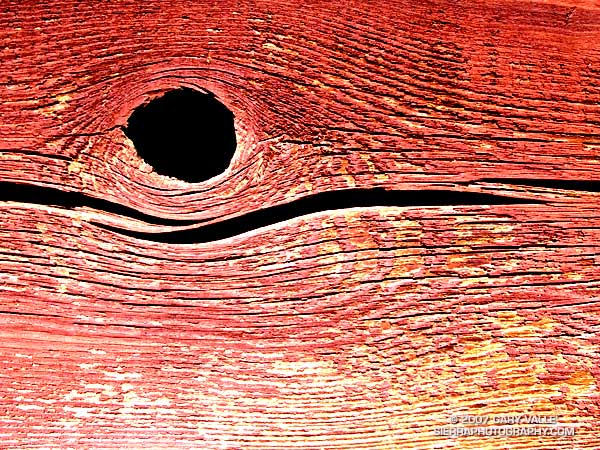
From the Three Points – Mt. Waterman trail run on Sunday.

From the Three Points – Mt. Waterman trail run on Sunday.
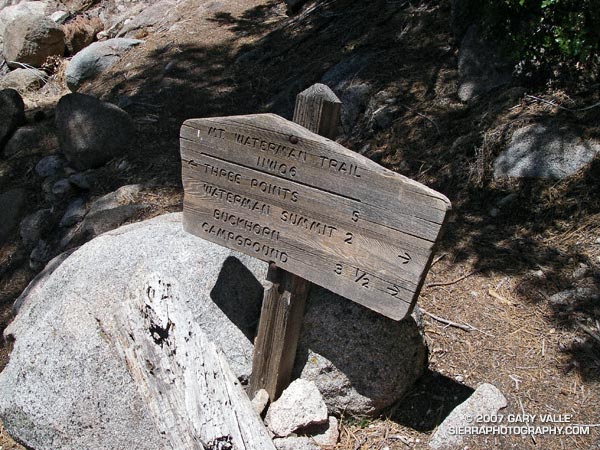
Five miles of (mostly) downhill to go. Running through an old growth forest of Jeffrey Pine, Sugar Pine and Incense Cedar, I relished being on a pine needle covered trail at 7000 ft. in the San Gabriel Mountains.
In a record dry water year, I had been curious to see how the mountains were faring. Although creeks were very low and grasses dry, my impression was that groundwater resources were not quite as bad. The usual springs and seeps still muddied the trail. In 2005 the San Gabriel Mountains were deluged with rain, and in the 2006 the rainfall was nearly normal, so some carryover would be expected.
Update May 27, 2007. My impression of groundwater resources may have been overly optimistic. On a run to Mt. Baden-Powell from Islip Saddle, I stopped by Little Jimmy Spring. It was nearly as low as in late August 2002, when Los Angeles had just experienced its driest water year on record. This year will likely break the 2001-2002 record.
Even so, it was obviously much drier than normal. There were fewer wildflowers, and some young Incense Cedars looked as if they might be stressed. On the plus side, manzanita and currant were blooming in profusion, and perhaps 30-35 scarlet red stalks of snow plant were seen on the loop.
About three miles from Three Points I happened upon another Jeffrey Pine that had been struck by lightning. This strike appeared to more energetic than the bolt that struck the tree on the Baldy North Backbone Trail. The spiral scar was wider and braided at some points, and the strike ignited the tree. Where the Baldy tree was on a sharp ridge crest, this tree was several hundred feet below the main crest in an area where the trail started to work around a projecting ridge.
More about this loop and a Google Earth image of the course can be found in the post Manzanita Morning.
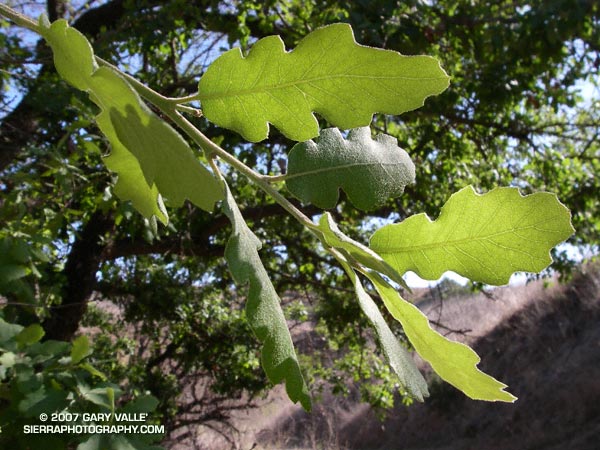
Update April 14, 2023. The Ahmanson Blue Oak has died. Please see the post Ahmanson Blue Oak Succumbs to Climate Change.
Blue oak (Quercus douglasii) is a characteristic oak of the lower elevations of the Sierra foothills and coastal mountains, its range essentially encircling California’s Central Valley.
Based on its reported range, Upper Las Virgenes Canyon Open Space Preserve (formerly Ahmanson Ranch) contains one of the southernmost populations of blue oak within its range. However, the predominate deciduous oak in the area is valley oak (Quercus lobata), and occurrences of blue oak appear to be rare. Regional climate modeling suggests that over the next century the range of blue oak could shift northward and diminish to nearly 60% of its current range.
Blue oak is reported to hybridize with valley oak, however a 2005 study suggests hybrids of these species may be more rare than generally accepted.
The photograph of the leaves of a blue oak was taken on a run along East Las Virgenes Canyon to Lasky Mesa on April 24, 2007. A valley oak immediately adjacent to this blue oak was killed in the 2005 Topanga Fire.
Related posts: Ahmanson Blue Oak Succumbs to Climate Change, Valley Oak Savanna, Laskey Mesa Oak
Technical papers:
Modeled regional climate change and California endemic oak ranges.
Kueppers, L.M., M.A. Snyder, L.C. Sloan, E.S. Zavaleta, and Brian Fulfrost. 2005.
Proceedings of the National Academy of Sciences of the United States of America, 102(45): 16281 – 16286.
Limited hybridization between Quercus lobata and Quercus douglasii (Fagaceae) in a mixed stand in central coastal California.
Kathleen J. Craft, Mary V. Ashley and Walter D. Koenig.
American Journal of Botany. 2002;89:1792-1798.
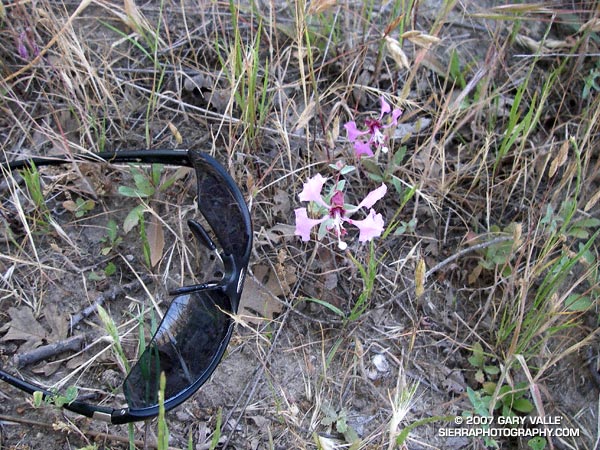
One of the best indicators of seasonal rainfall I’ve found in the oak woodland and chaparral areas of Southern California in which I run is Elegant Clarkia (Clarkia unguiculata). In a wet year it can grow more than 6 ft. tall. This year it is the shortest I’ve ever observed — about 5 inches in this photo taken near Lasky Mesa.
Related posts: Elegant Clarkia, Dealing With Drought
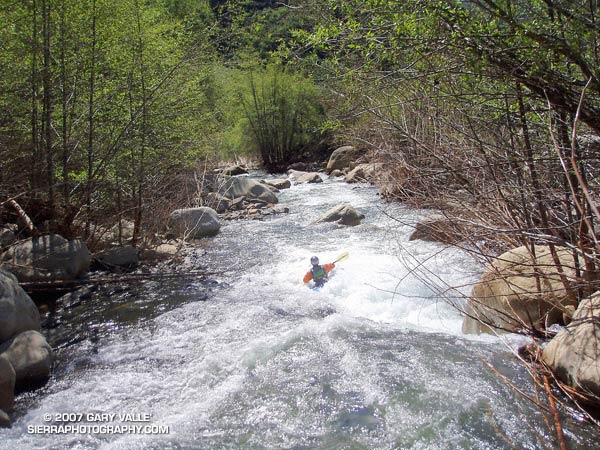
Running down the Silver Moccasin Trail from Shortcut Saddle to West Fork a couple of weeks ago, I mentioned to my running partner that a few years before, I had carried my whitewater kayak down the trail.
Around 1995, Gary Gunder and I started exploring the creeks and rivers of Southern California, looking for hidden gems that rarely – if ever – had been paddled. Kayaking these streams has been an incredible experience, and has enabled us to see some of the wildest and most beautiful places in the mountains of Southern California.
Creeking in Southern California is an “iffy” activity. Iffy in the sense that it usually takes a lot of rain for a stream to flow, and there is a very narrow window in which the flow will be ideal for paddling. In addition the canyons are steep and isolated, logistics are usually complicated, and more often than not it is necessary to carry your boat to the point on the stream where you put in. Paddling a stream can involve a hike of several miles, and a very long car shuttle. Several times we have gone to a creek, only to discover that it was too low to paddle.

Plastic kayaks may look light, but kayaks made for paddling creeks typically weigh around 45-50 lbs. Add to this the weight of paddling gear, rescue equipment, food and water and the total weight might be 65 lbs. or more. If food and overnight gear for a multi-day adventure are added to the mix, the total weight can top a beastly 90 lbs.
There is no good way to carry a heavily loaded kayak and you can be certain that obstacles such as downed trees, swollen creeks, and washed out trails will have to be negotiated. Picture yourself carrying a kayak (as a backpack) across a steep snow slope, slipping and falling, and then going for the sled ride of your life, flailing like an upside down turtle with a 90 lb. shell!
In 2003, when we paddled the West Fork San Gabriel River, it rained very heavily the night before. The storm set a new rainfall record for the date, and I was sure the river would be too high. But what a day, and what a river! Skies were partly cloudy and shafts of sunlight filtered through the firs, glistening off the water, and highlighting the saturated greens of mosses, ferns, grasses along the river. Ephemeral waterfalls cascaded and fell from cliffs at several points. It was a wilderness paddler’s dream day.
It would be difficult to pick a favorite among the creeks and streams we’ve paddled. Each one has its unique character, scenery and challenge. The best multi-day runs would probably be a 47 mile reach of the Wild & Scenic Sisquoc River near Santa Maria, and a wilderness section of the Wild & Scenic Kern River from Grasshopper Flat, past Kern Falls, to the Forks of the Kern. The most technical would probably be the upper Santa Ana River downstream of Filaree Flats, Arroyo Seco below Switzers, and upper Matilija Creek above Old Man Creek. The most scenic might be Middle Piru Creek or Upper Piru Creek. The wildest might be Yucca Creek, a tributary of the N.F. Kaweah.
The best my legs have ever felt running trails is following a wet rain season with a lot of kayak hiking!
Note: The title photograph is from a March 5, 2005 descent of upper Matilija Creek, near Ventura, California.
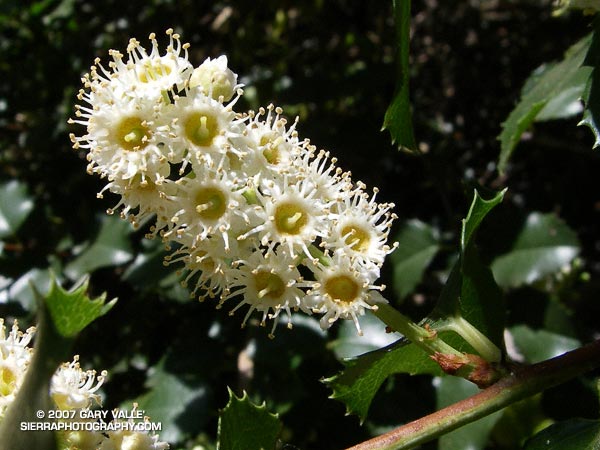
A closer look at the feathery blossoms of the holly-leaved cherry (Prunus ilicifolia) reveal a peculiar flower whose many stamens resemble the tentacles of a sea anemone.
Holly-leaved cherry is a member of the genus Prunus — the same as apricots, peaches, plums and cherries. As is the case with other species in this genus, the seed and leaves may contain hydrogen cyanide. It produces a small, thin-fleshed fruit favored by coyotes.
The photograph was taken on the slopes of Rivas Canyon near Will Rogers State Historic Park, while doing the route described in the post Will Rogers – Temescal Loop. Once again the weather for this (approximately) 21.5 mile loop was post-card perfect. A Google Earth image of a GPS trace of the route is available in the earlier post.